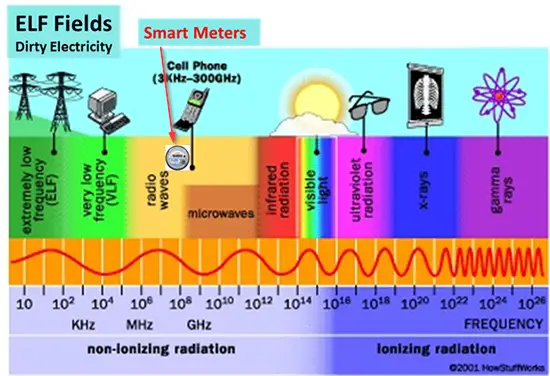Artificial Intelligence (AI) has emerged as a transformative force in our society, revolutionizing various aspects of our lives. From autonomous vehicles to healthcare, AI is reshaping industries and creating new opportunities. However, as AI continues to advance, it also raises important questions about its impact on individuals and communities. In this extensive exploration, we will delve into the question of who is most affected by AI.
AI’s Reach and Impact
AI’s influence extends far and wide, touching virtually every facet of modern life. Its applications are diverse, ranging from recommendation systems that personalize our online experiences to autonomous robots that assist in manufacturing. Its impact is profound, optimizing processes, enhancing decision-making, and offering novel solutions to complex problems.
Despite its vast potential, AI’s deployment is not uniform. It affects different groups of people in distinct ways. In our examination, we will consider various aspects of AI’s influence and the demographics that experience its effects most acutely.
Employment and Labor Market
One of the most prominent areas where AI has made a significant impact is the labor market. Automation, driven by AI and robotics, has transformed industries, making some jobs obsolete while creating new ones. Who is most affected by these changes?
1. Blue-Collar Workers: Traditionally, blue-collar workers in manufacturing and manual labor have borne the brunt of job displacement due to automation. This group often faces the challenge of reskilling and adapting to new roles, which can be a formidable task, especially for older workers.
2. Low-Skilled Workers: Individuals employed in low-skilled jobs, such as cashiering or data entry, are also vulnerable to AI-driven automation. These positions are often routine and repetitive, making them prime candidates for replacement by AI technologies.
3. High-Skilled Workers: Surprisingly, even high-skilled workers are not immune to AI’s impact. Professions such as legal research, financial analysis, and medical diagnostics have seen AI-powered tools assisting or augmenting human professionals. While AI can enhance productivity, it also changes the nature of work in these fields.
4. Displaced Workers: Those who lose their jobs due to AI-driven automation are most affected. Their livelihoods are disrupted, and they often face the challenge of transitioning into new roles. This group includes people from various backgrounds and skill levels.
5. Job Creators: On the flip side, AI has also created jobs. Tech companies, for example, require skilled AI engineers, data scientists, and machine learning experts. This has led to a significant demand for professionals in these fields.
Education and Skill Development
To navigate the AI-driven world effectively, individuals need to acquire new skills and adapt to changing workplace requirements. Education plays a pivotal role in determining who can harness AI’s benefits and who might be left behind.
1. Access to Quality Education: People with access to quality education have a significant advantage when it comes to adapting to AI-driven changes. They can acquire the skills necessary to work with AI technologies and become more competitive in the job market.
2. Digital Literacy: Basic digital literacy is essential in today’s world, and this is particularly true in the context of AI. Those who lack digital literacy skills may find it challenging to use AI-powered tools or understand AI’s implications.
3. Reskilling and Upskilling Opportunities: The availability of reskilling and upskilling programs is critical for helping individuals transition into AI-relevant roles. Communities that lack access to such programs may face greater challenges.
4. Socioeconomic Status: Socioeconomic disparities play a significant role in determining who can access education and skill development opportunities. Individuals from disadvantaged backgrounds may have limited access to resources that facilitate AI adaptation.
Ethical Considerations
AI technologies are not devoid of biases and ethical concerns. Who is most affected by these issues, and how do they manifest?
1. Bias and Discrimination: AI algorithms can perpetuate biases present in historical data, leading to unfair and discriminatory outcomes. Minority groups, already marginalized, may be disproportionately affected by biased AI systems.
2. Privacy Concerns: As AI becomes more integrated into daily life, concerns about data privacy grow. Those who are unaware of the potential risks or lack the means to protect their data may be most vulnerable to privacy violations.
3. Accountability and Regulation: The development and deployment of AI are often governed by complex regulations. Those with limited resources may struggle to hold organizations accountable for AI-related misconduct.
Healthcare
AI has the potential to revolutionize healthcare, from early disease detection to personalized treatment plans. However, its impact on healthcare accessibility and equity is a matter of concern.
1. Access to AI-Enhanced Healthcare: Individuals with access to advanced healthcare facilities are more likely to benefit from AI-powered medical advancements. Rural communities and underserved populations may face difficulties in accessing these benefits.
2. Healthcare Disparities: AI in healthcare can inadvertently exacerbate existing disparities. For example, if an AI algorithm is trained on data from predominantly affluent patients, it may not perform as well for patients from disadvantaged backgrounds.
3. Ethical Dilemmas: Decisions made by AI systems in healthcare, such as prioritizing patients for treatment, raise ethical questions. These decisions can disproportionately impact certain groups, depending on how the algorithms are designed.
AI in Finance
AI’s role in the financial sector has grown significantly, affecting individuals’ financial stability and access to services.
1. Credit Scoring: AI-driven credit scoring models are used to assess individuals’ creditworthiness. These models can impact loan approvals and interest rates, affecting the financial stability of those with limited credit history or low incomes.
2. Investment and Wealth Management: AI-powered robo-advisors are becoming increasingly popular for investment decisions. Those who can afford these services may benefit from AI-driven investment strategies, potentially growing their wealth at a faster rate.
3. Financial Inclusion: AI also plays a role in financial inclusion, making it easier for underserved populations to access banking and financial services. Mobile banking apps and digital wallets powered by AI have the potential to uplift marginalized communities.
Social Media and Information
AI algorithms play a pivotal role in shaping the content we consume on social media and the information we receive. This has far-reaching consequences on public discourse and perceptions.
1. Filter Bubbles and Echo Chambers: AI-driven content recommendation systems tend to show users content similar to what they’ve engaged with before. This can lead to the reinforcement of existing beliefs and limit exposure to diverse perspectives.
2. Misinformation and Fake News: AI-generated deepfakes and automated bots spread misinformation at an alarming rate. Vulnerable individuals who lack media literacy skills are more likely to fall prey to such disinformation.
3. Mental Health: Constant exposure to negative or divisive content on social media can have detrimental effects on mental health. Vulnerable individuals, such as teenagers, may be more susceptible to the negative impacts of AI-mediated content.
AI in Criminal Justice
The use of AI in criminal justice systems has raised concerns about fairness, bias, and due process.
1. Predictive Policing: AI is used to predict crime hotspots and allocate law enforcement resources accordingly. These systems can inadvertently target communities with higher crime rates, leading to over-policing.
2. Sentencing and Parole Decisions: AI tools are sometimes used to assist judges in sentencing and parole decisions. These tools may exhibit racial or socioeconomic biases, affecting marginalized communities disproportionately.
3. Surveillance: Facial recognition and other AI-based surveillance technologies can infringe on privacy rights. Vulnerable communities may be subjected to heightened surveillance, leading to concerns about civil liberties.
Environmental Impact
AI technologies, particularly in industries like agriculture and energy, can have environmental consequences. The communities most affected by these impacts are often those living in proximity to AI-powered facilities.
1. Environmental Justice: AI-driven industrial processes may lead to environmental pollution and harm nearby communities. These communities, often disadvantaged, face health risks and decreased quality of life.
2. Resource Allocation: AI is used in resource management, such as optimizing energy consumption. Communities that lack access to efficient resource management systems may experience resource shortages or environmental degradation.
Conclusion
The question of who is most affected by AI is multifaceted and complex. AI’s influence is pervasive, touching numerous aspects of our lives, from employment to healthcare, education to information consumption. Vulnerable communities, including those with limited access to resources, education, and political power, often bear the brunt of AI’s negative consequences.
As AI continues to evolve, it is imperative that we address the disparities it creates and work toward equitable solutions. This requires proactive efforts to bridge the digital divide, ensure unbiased AI algorithms, and promote inclusivity in the development and deployment of AI technologies. Only through such measures can we hope to harness the full potential of AI for the benefit of all.







Leave a Reply